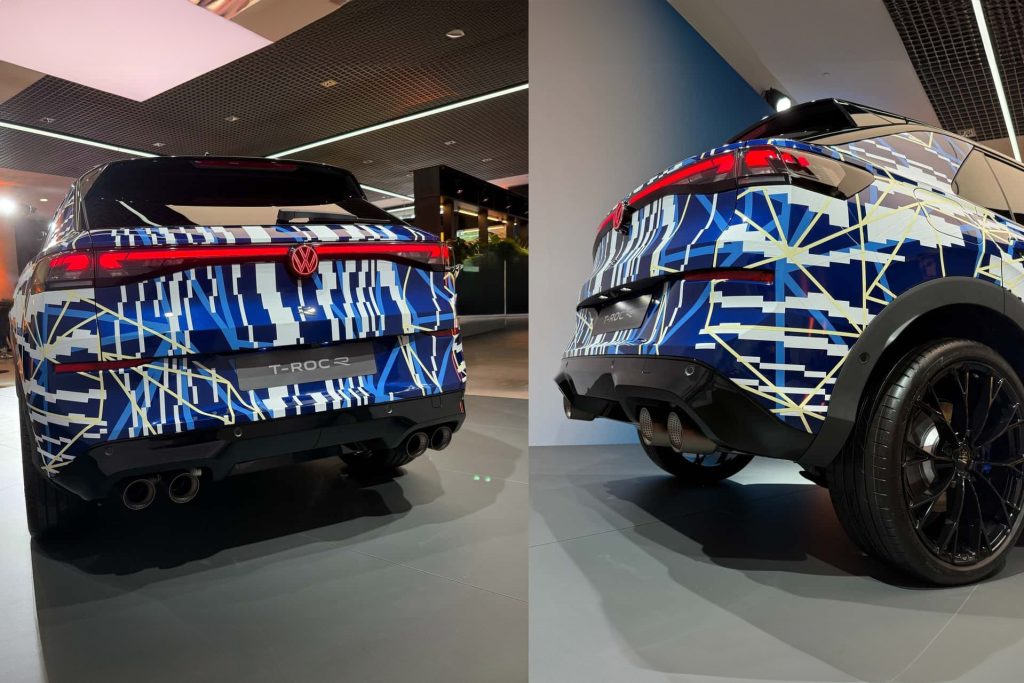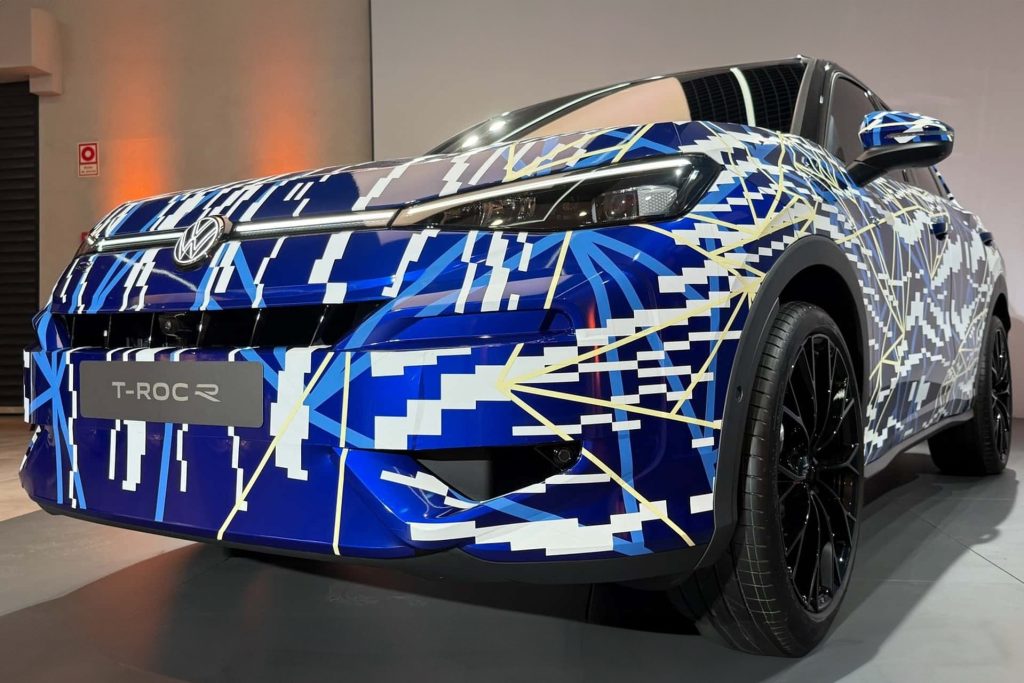Volkswagen previews T-Roc R
Volkswagen has offered an early look at the next T-Roc R, the brand’s hot compact SUV, and its upgraded powertrain suggests the Golf R could soon follow the same electrified path.
The current T-Roc is a major global model for Volkswagen, effectively serving as an SUV alternative to the Golf and is Europe’s fourth best-selling vehicle so far this year.
With customer deliveries of the next-gen T-Roc beginning this month, Volkswagen is already teasing the full-strength R version ahead of its 2027 launch. The prototype remains covered in camouflage, but several unmistakable performance cues give the game away. Chief among them is an Akrapovič quad-exhaust system, 20-inch forged wheels, and wider tyres than the original T-Roc R to improve grip. Images published by Autocritica also show more aggressive bumpers and enlarged brakes.

Mild-hybrid power for stricter emissions rules
The biggest change lies under the bonnet. The new T-Roc R will use the same turbocharged 2.0-litre petrol engine as the updated Golf R, producing 245kW and 420Nm. But this time, it gains a mild-hybrid system, a move driven by the need to meet upcoming Euro 7 emissions standards.
While 48-volt hybrid systems often allow for temporary power boosts, Volkswagen’s engineers are instead targeting improved efficiency, so the T-Roc R is expected to maintain the same output as the Golf R.
This also raises an important question: will the Golf R itself switch to a mild-hybrid 2.0 TSI? With the Mk8 confirmed as the last combustion-powered Golf, potentially remaining on sale until 2035, some level of electrification seems increasingly likely.

No return for the manual gearbox
Purists hoping for a manual comeback won’t find solace here. Like the current Golf R, the future T-Roc R will be offered exclusively with a seven-speed dual-clutch transmission and 4Motion all-wheel drive.
An electric R is only a matter of time
Volkswagen has already shown a glimpse of its future performance direction with the teased electric Polo GTI concept and ongoing hints at a fully electric R model. With tighter global emissions regulations on the horizon, the next era of R performance looks set to be built around electrons rather than exhaust pipes.





